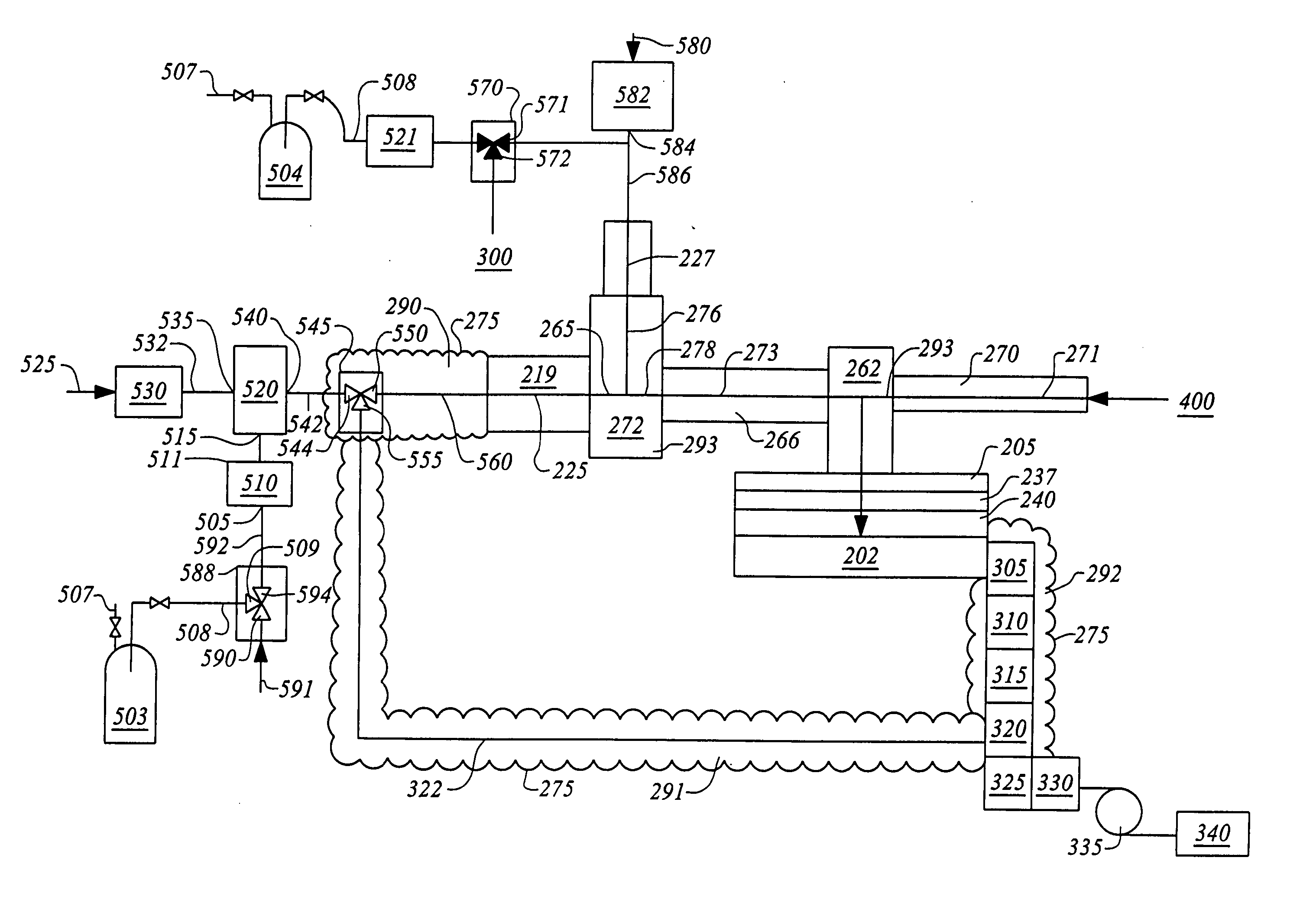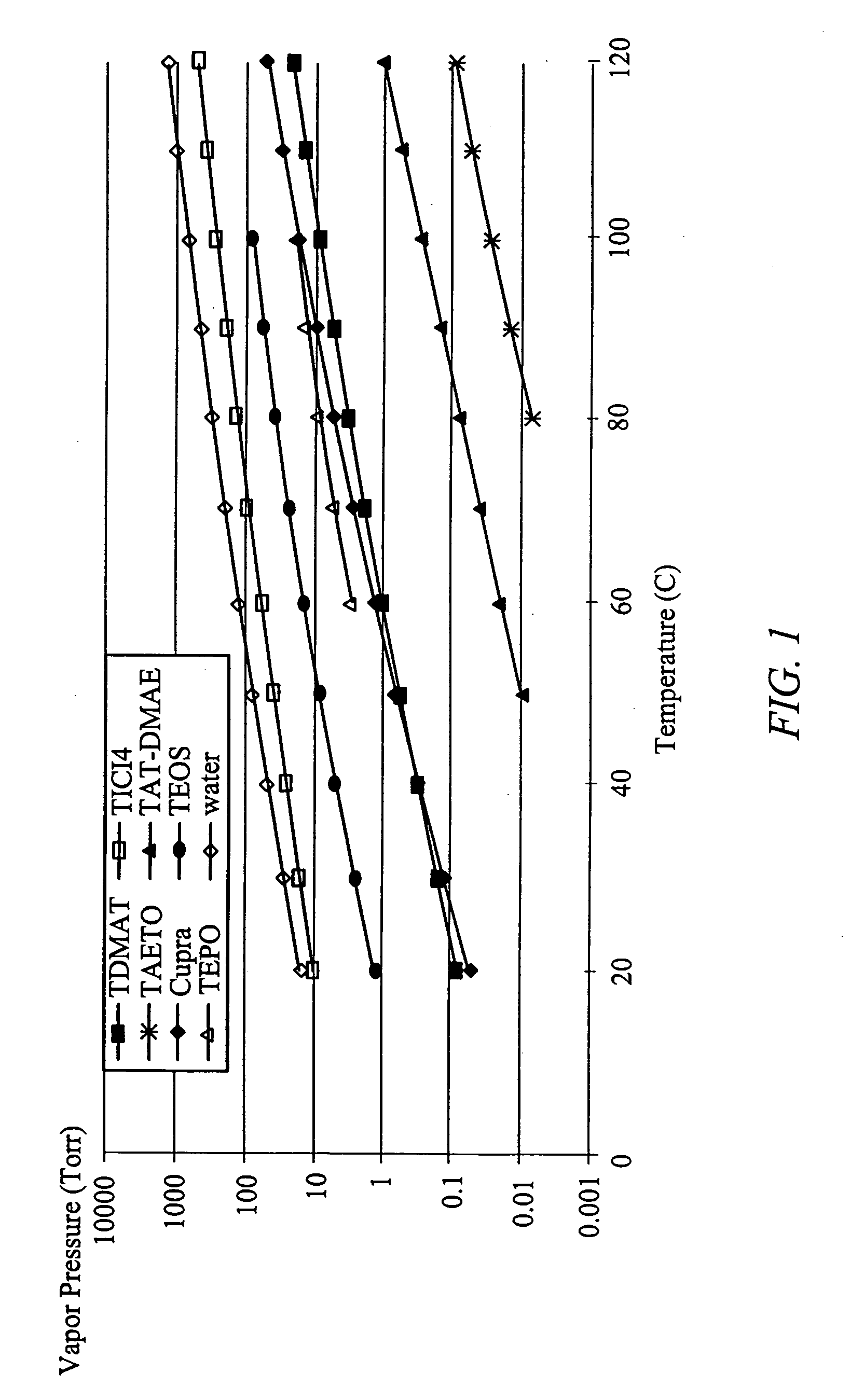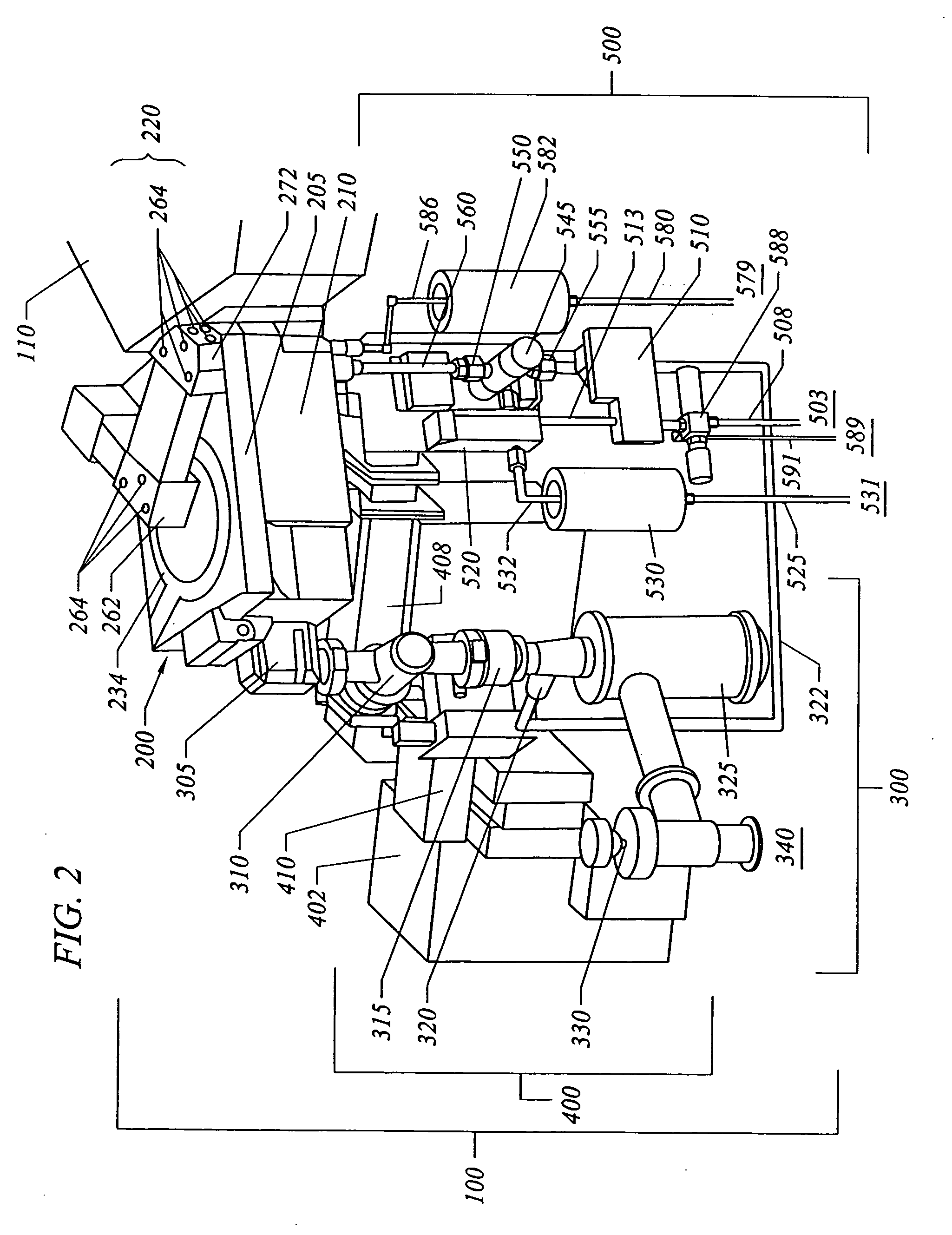Apparatus for the deposition of high dielectric constant films
a dielectric constant film and apparatus technology, applied in chemical vapor deposition coatings, coatings, metallic material coating processes, etc., can solve the problems of reducing the vapor temperature control of the gate, and reducing the vapor temperature control accuracy. , to achieve the effect of improving vapor temperature control
- Summary
- Abstract
- Description
- Claims
- Application Information
AI Technical Summary
Benefits of technology
Problems solved by technology
Method used
Image
Examples
Embodiment Construction
[0052] The foregoing and other aspects and advantages will be better understood from the following detailed description of the preferred embodiments of the invention with reference to the drawings. Like reference numerals refer to corresponding parts throughout the drawings.
[0053] The present invention is directed to a novel liquid delivery system (LDS), chemical vapor deposition (CVD) chamber, exhaust system, and remote plasma generator that together comprise a unique system especially useful for depositing thin metal-oxide films, such as hafnium silicate, as well as other films requiring vaporization of low volatility precursor liquids. This system also provides for an in-situ cleaning process that removes the metal-oxide films that are deposited on the interior surfaces of a deposition chamber as a by-product of the deposition process. The system also has application in making ultra large scale integration (ULSI) DRAM and other advanced electronic devices that require the deposi...
PUM
| Property | Measurement | Unit |
|---|---|---|
| temperature | aaaaa | aaaaa |
| temperature | aaaaa | aaaaa |
| temperature | aaaaa | aaaaa |
Abstract
Description
Claims
Application Information
 Login to View More
Login to View More - R&D
- Intellectual Property
- Life Sciences
- Materials
- Tech Scout
- Unparalleled Data Quality
- Higher Quality Content
- 60% Fewer Hallucinations
Browse by: Latest US Patents, China's latest patents, Technical Efficacy Thesaurus, Application Domain, Technology Topic, Popular Technical Reports.
© 2025 PatSnap. All rights reserved.Legal|Privacy policy|Modern Slavery Act Transparency Statement|Sitemap|About US| Contact US: help@patsnap.com



